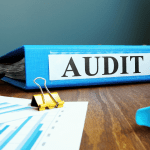Directors Report Format: A Comprehensive Guide
Directors Report Format-In the realm of corporate governance, the Directors Report holds paramount significance. It serves as a vital communication tool between a company’s board of directors and its shareholders. Understanding the essence of a well-crafted Directors Report, as prescribed by the Companies Act, 2013, is crucial for maintaining transparency and accountability within an organization. Let’s delve into the intricacies of crafting an effective Directors Report.
Introduction
The introduction sets the tone for the Directors Report, providing a brief overview of its purpose and significance. It highlights the importance of the report as a means of communication between the company’s board of directors and its shareholders. It may also touch upon the legal requirements and regulatory framework governing the preparation and presentation of the report.
Financial Performance Highlights – Directors Report Format
Yearly Financial Snapshot
This section provides a comprehensive overview of the company’s financial performance over the past year. It includes key financial metrics such as revenue, profit, expenses, and net income. A comparison with previous years’ performance may also be provided to give stakeholders a sense of the company’s financial trajectory.
Profit/Loss Analysis
Here, the report delves into the factors contributing to the company’s profitability or losses. It may analyze revenue sources, cost structures, and other financial indicators to provide insights into the drivers of profit or loss.
Revenue Growth Metrics
This section focuses specifically on the company’s revenue growth trends. It may highlight growth rates, revenue sources, and any significant factors influencing revenue generation. Stakeholders gain valuable insights into the company’s ability to generate sustainable revenue streams.
State of Affairs – Directors Report Format
Business Activities Overview
The business activities overview outlines the core operations and activities of the company. It provides stakeholders with a clear understanding of the company’s primary areas of focus and the markets it operates in.
Business Stability Assessment
This section assesses the stability of the company’s business operations. It may analyze factors such as market dynamics, competitive landscape, and operational resilience to determine the company’s ability to withstand external shocks and uncertainties.
Dividends Declaration – Directors Report Format
Dividend Declaration Process
Here, the report outlines the process by which dividends are declared and distributed to shareholders. It may include details of dividend policy, dividend calculation methods, and the decision-making process involved in declaring dividends.
Impact on Shareholders
This section examines the impact of dividend declarations on shareholders. It may discuss the significance of dividends as a source of income for shareholders and their implications for shareholder value and wealth creation.
Details of Subsidiaries and Joint Ventures
Subsidiaries Overview
In this section, the report provides an overview of the company’s subsidiaries, if any. It may include information such as the names of subsidiaries, their business activities, and their financial performance.
Joint Ventures Analysis
Here, the report analyzes the company’s joint ventures and their contribution to the company’s overall performance. It may discuss the strategic rationale behind joint ventures and their impact on the company’s growth strategy.
Internal Financial Control – Directors Report Format
Importance of Internal Controls
This section underscores the importance of internal financial controls in ensuring the integrity and reliability of financial reporting. It may discuss the role of internal controls in mitigating risks, preventing fraud, and ensuring compliance with regulatory requirements.
Control Testing Procedures
Here, the report outlines the procedures used to test the effectiveness of internal financial controls. It may include details of internal audit processes, control testing methodologies, and the frequency of control assessments.
Board of Directors and Key Managerial Personnel Directors Report Format
Board Composition
This section provides an overview of the composition of the company’s board of directors. It may include details such as the names and qualifications of board members, their roles and responsibilities, and any changes to the board composition during the reporting period.
Directorial Changes
Here, the report discusses any changes to the company’s board of directors during the reporting period. It may include details of new appointments, resignations, or changes in directorial roles.
Meeting Summaries
This section provides summaries of board meetings held during the reporting period. It may include information such as the frequency of meetings, agenda items, and key decisions taken by the board.
Frequency and Conduct of Board Meetings
The report may also discuss the frequency and conduct of board meetings, ensuring transparency in the company’s governance practices. It may highlight the adherence to regulatory requirements regarding board meeting conduct.
Attendance Record
Here, the report provides an attendance record of board members at board meetings held during the reporting period. It may include details of board members’ attendance rates and any instances of non-attendance.
Auditor’s Report
Auditor Retention
This section discusses the retention of the company’s auditors and their tenure. It may include details of the auditor’s appointment process, their qualifications, and any changes in auditor appointments during the reporting period.
Addressing Auditor’s Observations
Here, the report addresses any observations or findings made by the company’s auditors. It may include management’s responses to auditor recommendations and actions taken to address any audit findings.
Loans and Investments – Directors Report Format
Compliance with Section 186
This section discusses the company’s compliance with Section 186 of the Companies Act, which regulates loans and investments by companies. It may include details of loans given, investments made, and compliance with statutory requirements.
Investment Details
Here, the report provides details of the company’s investments during the reporting period. It may include information such as investment objectives, investment types, and investment performance.
Annual Return Extract – Directors Report Format
Mandatory Disclosure
This section provides a mandatory disclosure of the company’s annual return extract as required by Section 92 of the Companies Act. It may include details such as the company’s registered office, share capital, and directors’ details.
Compliance with Section 92
Here, the report discusses the company’s compliance with Section 92 of the Companies Act, which mandates the filing of annual returns. It may include details of the annual return filing process and any instances of non-compliance.
Related Party Transactions – Directors Report Format
Disclosure Requirements
This section discusses the disclosure requirements for related party transactions as per regulatory guidelines. It may include details of related party transactions entered into by the company during the reporting period.
Arm’s Length Transaction Clarification
Here, the report clarifies that related party transactions were conducted on an arm’s length basis and in the ordinary course of business. It may highlight measures taken to ensure transparency and fairness in related party transactions.
Energy Conservation and Technology Absorption – Directors Report Format
Environmental Compliance
This section discusses the company’s compliance with environmental regulations and its efforts towards energy conservation. It may include details of energy-saving initiatives, environmental impact assessments, and regulatory compliance measures.
Manufacturing-specific Considerations
Here, the report discusses any manufacturing-specific considerations related to energy conservation and technology absorption. It may include details of technology adoption, innovation initiatives, and manufacturing process improvements.
Foreign Exchange Transactions – Directors Report Format
Forex Earnings and Expenditure
This section provides details of the company’s foreign exchange earnings and expenditure during the reporting period. It may include information such as foreign currency transactions, exchange rate fluctuations, and currency risk management practices.
Risk Management Policy – Directors Report Format
Risk Identification and Mitigation Strategies
This section discusses the company’s risk management policy and its efforts to identify and mitigate risks. It may include details of risk assessment methodologies, risk mitigation strategies, and ongoing monitoring processes.
By addressing each outlined topic in detail, the Directors Report provides stakeholders with a comprehensive understanding of the company’s performance, governance practices, and future prospects
Frequently Asked Questions (FAQs):
- Why is the Directors Report important?
- The Directors Report provides stakeholders with valuable insights into a company’s performance, governance practices, and future outlook, fostering transparency and accountability.
- What are the key components of a Directors Report?
- Key components include financial performance highlights, business operations overview, corporate governance disclosures, and future prospects assessment.
- How often is the Directors Report prepared?
- The Directors Report is prepared annually and presented at the company’s Annual General Meeting (AGM) along with other financial statements.
- Who prepares the Directors Report?
- The Directors Report is typically prepared by the board of directors in collaboration with key management personnel and auditors.
- Can shareholders provide feedback on the Directors Report?
- Yes, shareholders can provide feedback on the Directors Report during the AGM or through other communication channels provided by the company.
In conclusion, the detailed exploration of each outlined topic within the Directors Report format sheds light on various facets of corporate governance, financial performance, and strategic direction. By meticulously examining areas such as financial highlights, business activities, internal controls, and compliance measures, stakeholders gain valuable insights into the company’s operations and its adherence to regulatory standards.
The Directors Report serves as a crucial tool for transparency and accountability, fostering trust and confidence among shareholders, investors, and regulatory bodies. Through comprehensive disclosures and thorough analysis, the report enables stakeholders to make informed decisions about their involvement with the company.
Furthermore, the Directors Report underscores the company’s commitment to sound corporate governance practices, risk management, and sustainable business growth. By addressing key areas of concern and outlining strategic initiatives, the report demonstrates the company’s proactive approach to addressing challenges and capitalizing on opportunities.
In essence, the Directors Report serves as a testament to the company’s commitment to transparency, integrity, and long-term value creation. It represents a vital communication channel between the board of directors and stakeholders, facilitating dialogue, trust, and collaboration in pursuit of organizational excellence.
Author Note:
Noor Siddiqui is a seasoned tax consultant and financial expert with years of experience in the field of taxation and corporate finance. As the founder of etaxdial.com, Noor has dedicated himself to providing valuable insights and guidance to individuals and businesses navigating the complex world of taxes and financial management.
With a deep understanding of tax laws, regulations, and compliance requirements, Noor has helped numerous clients optimize their tax strategies, minimize liabilities, and achieve their financial goals. His expertise spans various areas of taxation, including income tax, GST, international taxation, and corporate tax planning.
Noor is passionate about empowering his clients with knowledge and resources to make informed decisions about their finances. Through etaxdial.com, he aims to demystify tax concepts, simplify compliance processes, and provide practical solutions tailored to each client’s unique needs.
Whether it’s tax planning, filing returns, or resolving tax-related issues, Noor is committed to delivering reliable, personalized service and ensuring his clients’ financial well-being. With a reputation for integrity, professionalism, and excellence, he continues to be a trusted advisor to individuals and businesses seeking expert tax advice and assistance.
For more information and personalized tax solutions, visit etaxdial.com and connect with Noor Siddiqui today.




